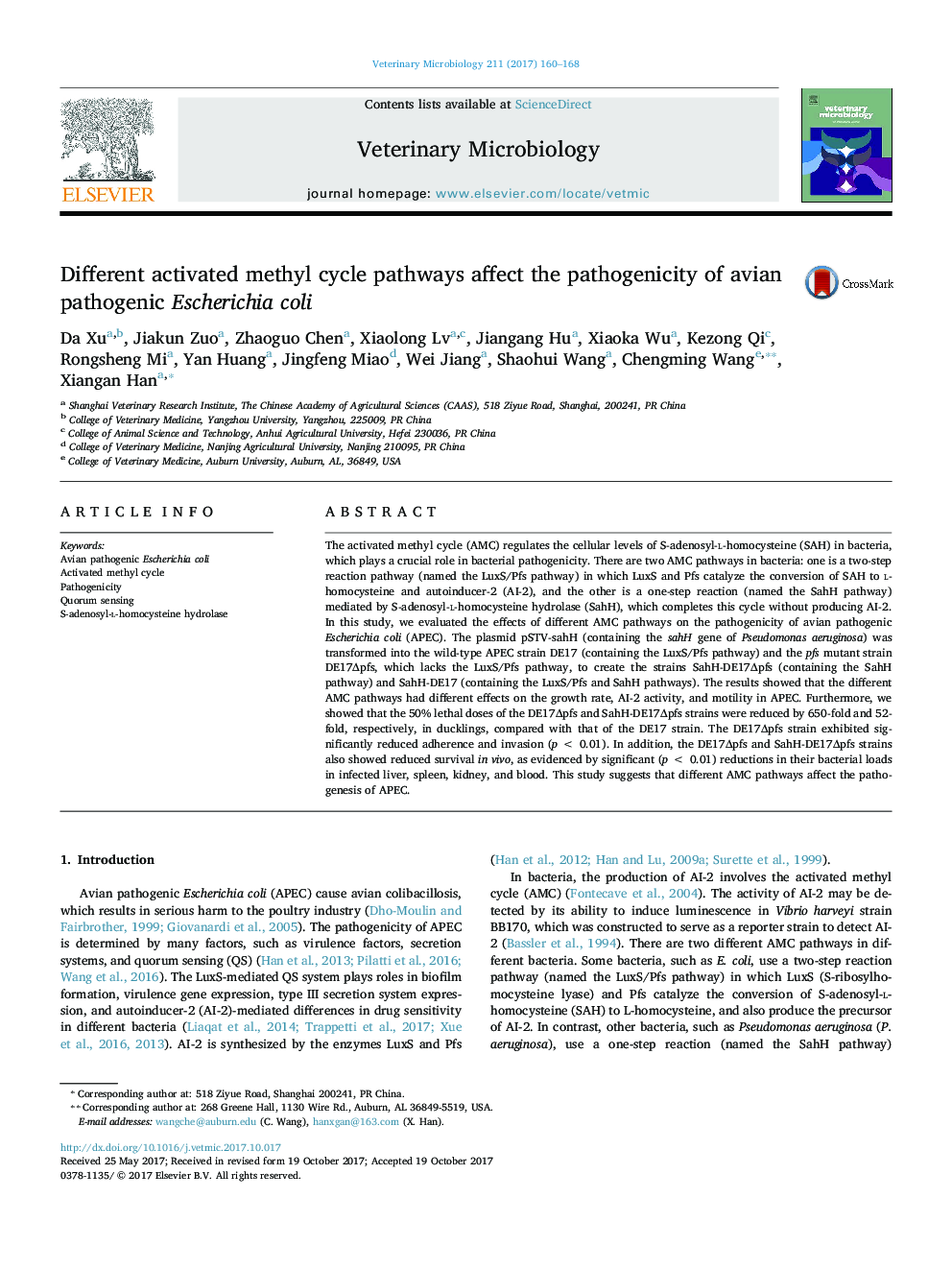| Article ID | Journal | Published Year | Pages | File Type |
|---|---|---|---|---|
| 8505726 | Veterinary Microbiology | 2017 | 9 Pages |
Abstract
The activated methyl cycle (AMC) regulates the cellular levels of S-adenosyl-l-homocysteine (SAH) in bacteria, which plays a crucial role in bacterial pathogenicity. There are two AMC pathways in bacteria: one is a two-step reaction pathway (named the LuxS/Pfs pathway) in which LuxS and Pfs catalyze the conversion of SAH to l-homocysteine and autoinducer-2 (AI-2), and the other is a one-step reaction (named the SahH pathway) mediated by S-adenosyl-l-homocysteine hydrolase (SahH), which completes this cycle without producing AI-2. In this study, we evaluated the effects of different AMC pathways on the pathogenicity of avian pathogenic Escherichia coli (APEC). The plasmid pSTV-sahH (containing the sahH gene of Pseudomonas aeruginosa) was transformed into the wild-type APEC strain DE17 (containing the LuxS/Pfs pathway) and the pfs mutant strain DE17Îpfs, which lacks the LuxS/Pfs pathway, to create the strains SahH-DE17Îpfs (containing the SahH pathway) and SahH-DE17 (containing the LuxS/Pfs and SahH pathways). The results showed that the different AMC pathways had different effects on the growth rate, AI-2 activity, and motility in APEC. Furthermore, we showed that the 50% lethal doses of the DE17Îpfs and SahH-DE17Îpfs strains were reduced by 650-fold and 52-fold, respectively, in ducklings, compared with that of the DE17 strain. The DE17Îpfs strain exhibited significantly reduced adherence and invasion (p < 0.01). In addition, the DE17Îpfs and SahH-DE17Îpfs strains also showed reduced survival in vivo, as evidenced by significant (p < 0.01) reductions in their bacterial loads in infected liver, spleen, kidney, and blood. This study suggests that different AMC pathways affect the pathogenesis of APEC.
Keywords
Related Topics
Life Sciences
Agricultural and Biological Sciences
Animal Science and Zoology
Authors
Da Xu, Jiakun Zuo, Zhaoguo Chen, Xiaolong Lv, Jiangang Hu, Xiaoka Wu, Kezong Qi, Rongsheng Mi, Yan Huang, Jingfeng Miao, Wei Jiang, Shaohui Wang, Chengming Wang, Xiangan Han,
